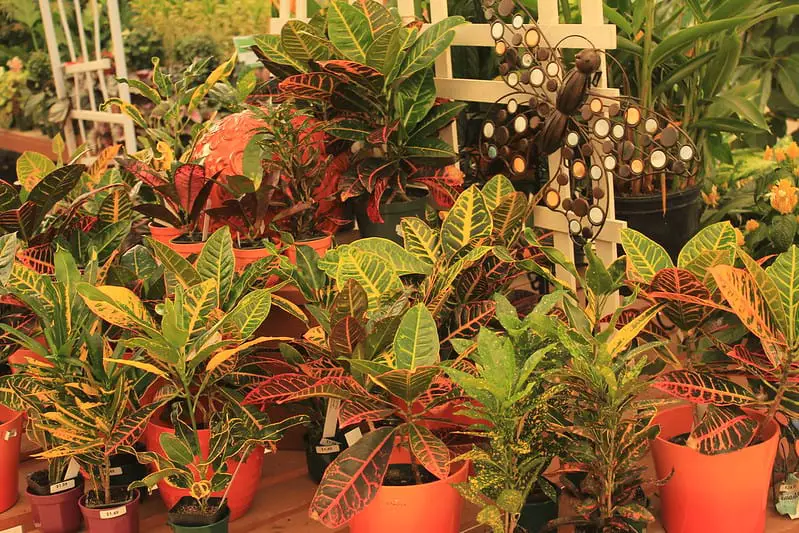Indoor plants help improve air quality and the appearance of the space.
If you are looking for a way to improve your moods or self-esteem while indoors, consider getting yourself a houseplant, whether real or faux.
Six Manufactured Home Easy To Care For Houseplants Pre-Shopping Tips
1. Choose the Spot
Start by deciding the spot. Many homeowners erroneously choose which indoor plant they want to bring in the home before even knowing where to place it.
Truth is, you need to make a decision where you want the plant will be before buying one.
This’s because different indoor plants thrive in different conditions and spots, all depending on the level of lighting and available space.
When deciding the right spot for your indoor plant, the main factors to bear in mind are these:
2. Spacing needs
The likeliest mistake you could make is to try squeezing your plants between things.
Squeezing your indoor plants between objects or placing them behind your furniture is the surest way to block light and airflow. Such an arrangement makes it quite difficult for the plant to breathe and get enough light for photosynthesis.
Ample airflow helps ensure a healthy, longer-living indoor plant with strong stems.
With just the right amount of airflow, your home plant can have better CO2 replenishment and temperature control. Airflow also cuts the overall humidity around the plant and lowers the chances of some diseases.
Other factors to consider are:
- Temperature needs of your plants
- Humidity needs
3. Size
While potted plants are normally small, consider buying a smaller plant when they are still in the shooting stage.
Remember the plant will keep growing while in your home, so this choice of size puts that into consideration
4. Safety
This is probably the most ignored factor, but one that’s a whole lot important.
Ensure that you are not buying a toxic plant. Some pets such as cats love to chew on leaves and grass once in a while.
You don’t want an indoor plant that will send your pet to the vet.
5. Aesthetics
What does the plant look like?
Do you love the appearance?
It’s important to remember that one of the chief reasons why you are going for an indoor plant is to improve the appearance of your indoor space.
6. Watering needs
The best indoor plant seldom gets thirsty.
Find a plant that can go for a long time without water just so you don’t find it dead when you return from your vacation.
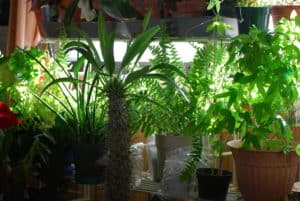
Top Ten Real Indoor Plants You Should Bring Into Your Manufactured Home
1. Philodendron Pothos
The philodendron looks very much like a pothos, but the leaves are slightly darker and a whole lot less shiny.
The heart-shaped leaves look good indoors. The best thing is that this plant can take a great deal of neglect and some level of smothering.
Plus, the plant is very easy to root. This means you need just one plant to create a small jungle.
- It doesn’t take a lot of water. Only water the plant when the soil is partially dry.
2. Fiddle-Leaf Fig Tree (sc. Ficus lyrata)
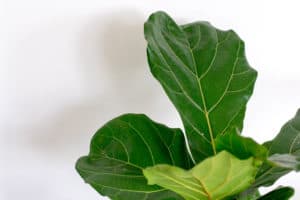
Fiddle-Leaf Fig Tree is a shrub with a long and elegant stem that divides into branches with broad and leathery leaves. You need to know that this plant requires a lot of light.
The recommended spot is anywhere with plenty of skylight or close to the window.
Also, because it tends to grow considerably tall with large leaves, be ready to prune the top branches once every few months especially when it grows slightly above your window frame.
- Watering: Be prepared to refresh it once every week. During summertime and when the air indoors is warm and dry, you will need to water it a bit more frequently, like twice a week.
3. Split-Leaf Philodendron (sc. Monstera deliciosa)


A favorite of Henri Matisse, Split Leaf Philodendron comes with a distinctive leaf shape that appears as if it has been gently cut into with scissors but by careful hands.
You actually can cut off the topmost part—as long as the air roots remain attached—and easily replant it in another pot.
This means that, if you buy just one plant, you could easily use it to furnish your whole home in a matter of months.
- Watering and Care: Water it once a week at it will do just fine.
4. Meyer Lemon Tree (sc. Citrus X meyeri)


This indoor tree bears its namesake’s Meyer lemons – which is reckoned to be a cross of mandarin oranges and lemons and mandarin oranges – subtle and sweeter flavor that’s stronger than that of lemons.
But fruits aren’t the only benefit you will get from this tree – when they bloom, the homeowner can enjoy its beautiful fragrance that’s characteristic of citrus flowers.
The tree does well indoors, but need to have access to a lot of light, so you will need to place it close to the window or balcony.
- Watering and Care: Water it once per week.
5. Kentia Palm (sc. Howea forsteriana)


Perhaps the most arresting feature of this tree is the fronds, which tend to spring to higher heights from a good soil before leaning forward, quietly and magnificently shading the ground below it.
It looks particularly beautiful when grown in a voluminous urn but that means a lot of space.
Another reason why you will need to leave a lot of space for this tree is its tendency to grow to about 10 feet – that’s tall!
- Watering and Care: Requires medium light levels but also thrives under bright light. You can water weekly.
6. Castiron Plant (sc. Aspidistra elatior)


If you are looking for an indoor plant that’s mostly for foliage, this’s going to be a hit for you. It is the perfect choice if you are planning to add a lush and dark green shrub to your space.
It grows well in spaces with medium or low light levels, meaning you don’t need to bring it too close to the balcony or window.
Better yet, it is one of those indoor plants that are highly tolerant of neglect, so it is fine if you don’t water for some time.
- Watering and Care: You can water it once every week or every 10 days.
7. Amazon Lily (sc. Eucharis amazonica)
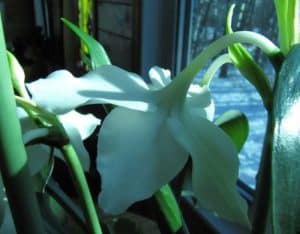
Yet another beautifully flowered dark green plant that could bring the wow factor to your space.
Its large white flowers bloom throughout the winter all the way to the start of the spring.
Even when it is not blooming, it is nice to gaze at. Any space with medium light and dry soil would be great for it. However, the soil needs to be left to only dry between two watering sessions.
- Watering and Care: The leaves will wilt when it needs water, but once a week should suffice.
8. Snake Plant (sc. Sansevieria trifasciata)


The snake planet used to be an indoor plant to kill for many decades ago, but it’s having a resurgence, more so for contemporary interiors.
If you are looking for the perfect indoor plant to accompany your traditional or contemporary space, this is the plant for the job.
Perhaps the most unmistakable feature of the snake plant, and also what makes it loveable, are its sword-shaped leaves that wind gently from the potting soil like a bunch of charmed snakes raising their heads from a basket.
The plant strikes a beautiful balance between chaos and order.
- Watering and Care: Place the plant somewhere you would like but let the potted soil dry completely in-between watering sessions. Check the soil once every week.
9. African Spear Plant (sc. Sansevieria Cylindrica)


This plant is probably the most architectural and sculptural addition you could bring to your home. Its conical leaves conjure pictures of spired skyscrapers and obelisks. It is also probably the hardiest plant you could bring in your space, thanks to the large fleshy succulent leaves that hoard water for months’ worth of future use.
- Watering and Care: Place it at any light level you choose, the plant will happily roll with it. And because it stores a lot of water in leaves, refresh it once every few weeks.
10. Peruvian Apple Cactus (sc. Cereus peruvianus)


It doesn’t matter what the outdoor weather looks like, a cactus will always make you feel like you are in a serene desert oasis in your own home.
Not only is this plant incredibly easy to manage and care for, but also its upright sculptural structure and architectural oddity make a gigantic statement in the room.
As the plant grows and increases in height, it tends to bend toward the light. So, to balance it, you need to rotate the pot so it is tilting away from the window and then it’ll tilt back.
- Watering and Care: Bright but indirect light works best for this plant. However, it will still fare well if your space is endowed with full or medium light conditions. You can refresh it once a month.
Here Are Ten Artificial Plants Perfect For Manufactured Home Spaces
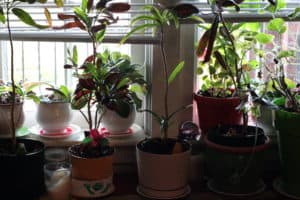
If you are not a fan of the natural plants, you can go for the fake options and still get the benefits.
There’s a lot you will miss though. Fake potted plants won’t release oxygen in the room.
They also feel fake on the skin, no matter how lush or realistic they are made to look.
Faux plants come with a few economic benefits. They also help furnish your room without being bothersome.
For example, faux plants don’t need to be watered, meaning you won’t worry about returning to dead plants from your vacation.
You also don’t need to be too careful with lighting – you install the faux at a given spot and forget everything except for occasional wiping.
For homeowners whose homes don’t have large rooms that can accommodate the constantly growing natural plants, artificial options would be a better option because their height and size are fixed.
1. Faux Snake Plant


Do you like the real snake plant but you’re not ready for the real thing yet?
Why not go for a faux snake plant?
You got it – this lush green snake plant comes with realistic foliage minus the hassle of watering and daily maintenance. Each plant is potted in a durable and neutral black pot to give easy styling.
2. Artificial Eucalyptus Plant


Few things look cute like a fake Eucalyptus shrub. Hand-crafted by Artisans, our ceramic planter will help upgrade your plant game in style.
Made of ceramic clay and painted white with immaculate chic Mayan patterns, this 5.5″ x 5.5″ x 11.5″ planter can be placed on top of the table or window.
It will add a chic nature to the living space or home office. Faux Eucalyptus is included, meaning you’ll never have to think about watering a real plant again.
3. Artificial Ivy Plant


This artificial ivy is almost indistinguishable from a real ivy – comes with stringy creepers for branches and hangs from the pot gracefully, making it ideal for your walls or ceiling (somewhere in your balcony or study room, not the living room).
4. Artificial Bamboo Plant


This 64″ realistic-looking bamboo tree is made from silk.
The trunk looks near natural.
The rest of the body is made up of branches and an incredible 1,040 blade-like leaves!
If you are a lover of bamboo and you’re looking for something closest to the real bamboo tree, this can be one of the best options for you.
5. MIXROSE & Fake Purple Lavender


Lavenders are cute but demand a lot of light.
Also, they are some of the most demanding indoor plants when it comes to watering and care.
The soil also needs to be well-drained. That sounds like a lot of labor, right? Fortunately, you can opt for faux purple lavenders with mixrose in one pot.
6. Artificial Ficus Tree


Give your living space a touch of beautiful herbal flair with this fabulous artificial ficus tree.
It is made with a real, natural North American wooden trunk.
The charming design showcases the realistic-looking polyester branches and leaves, PVC stem, and square wicker planter.
This looks like an artificial plant you could use to create an inviting ensemble in the verandah.
7. Nearly Natural Golden Cane Palm Silk Tree


If you live in Miami or California, a palm tree in your home is near a must-have.
But if you loathe the responsibilities that come with real palm trees, you can go buy this silk-made super tactile faux palm to decorate your home.
The best thing is that the branches are flexible enough not to give you trouble during cleaning.
8. Artificial Swedish Ivy


The Swedish ivy is unique among ivies.
Instead of tiny green leaves on creeping branches, it features larger broad leaves anywhere between bluish and purple although the faux ones can be green sometimes.
9. Artificial Primrose Plant


A potted primrose is one of the simplest methods to establish a warm and welcoming environment in your verandah.
Primroses are loved for their ability to improve the mood, which can help achieve such things as productivity and general happiness in the home.
Not only does this artificial primrose provide colorful and decorative greenery in your space, but it also reminds you of mother nature, in a faux way.
They are also maintenance-free since you won’t need to supply them with water, fertilizer, or pesticides. You will enjoy the full beauty of the real primrose plant without the pest, mess, and most notably, the job of pruning them once in a few months.
10. Artificial turf grass
Do you want to add some grass on your balcony or parts of your living but you dread mowing? Buying turf grass would be a good idea. Between mowing, weeding, and watering, maintaining real grass can be laborious.
But with this faux grass, you can keep the lawn lush and attractive without the hours of upkeep – just roll it out and forget. It is made from bright green-hued plastic.
The rest of the turf is non-toxic and resists damages inflicted by both low and high temperatures, snow and rain, UV, and pets.
The rubber-coated backside is dotted with tiny drainage holes that prevent water from pooling.
he best thing is that it can be unrolled and place somewhere else, say, the yard, as a children or pet play area, in a home gymnasium or aerobic settings, or inside as a rug or carpet.
Where Do You Find the Best Indoor Trees?
There are many sources you can get faux and real indoor trees that meet your needs, but these are the most popular ones:
- Bloomscape
- Etsy
- Amazon
- The Sill
- Wayfair
- West Elm
- Home Depot
- Target
- Pottery Barn
- Terrain
- Nearly Natural
- Artiplanto
- Afloral
- IKEA
Conclusion
When shopping for an indoor plant, consider
- the light supply in the room
- the lighting needs of the plants
- humidity
- and temperature.
Thirsty plants will require close attention and frequent watering.
You can avoid all these by going for a faux plant.

